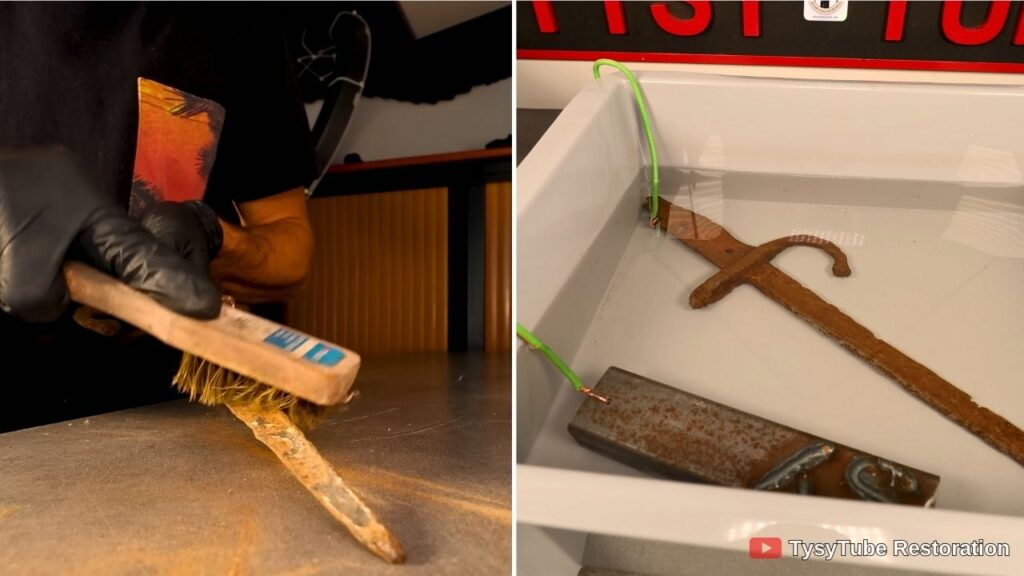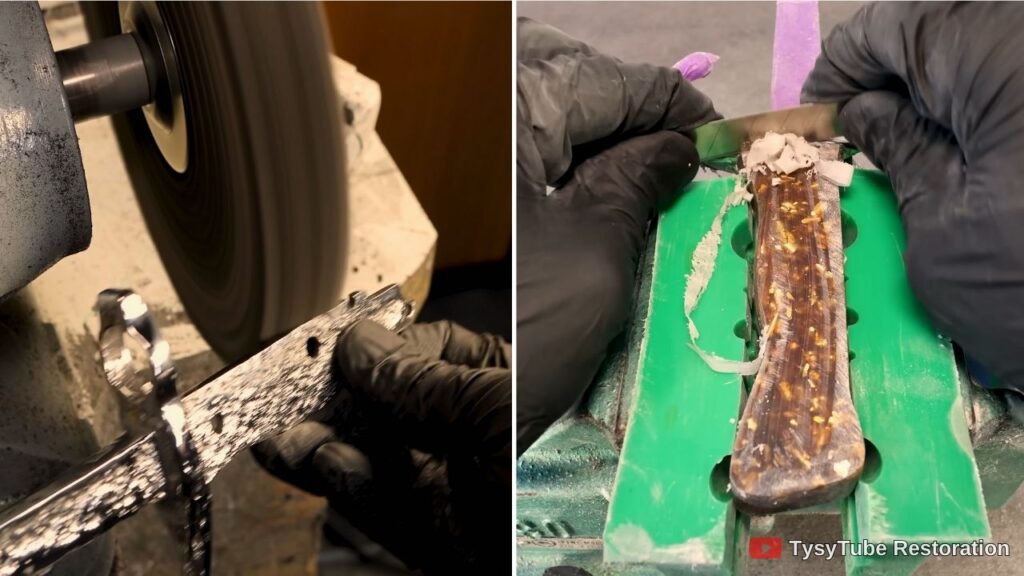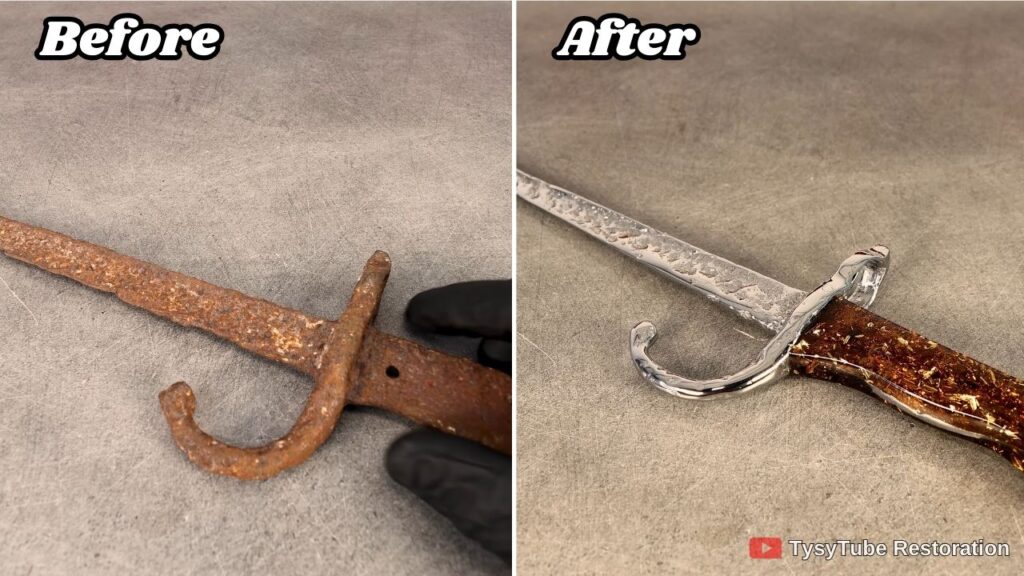A forgotten bayonet can hold many stories. It can remind modern viewers of distant battles and faded memories. One restorer came across such a bayonet at a humble flea market. It was a French model from World War II.
Heavy rust covered every inch of metal. The blade itself seemed ruined. Most shoppers would have ignored it. Yet, the restorer decided to embark on a challenging project.
A Rare Find
The flea market vendor did not know many details. He only knew the bayonet was old and in poor shape. The restorer studied its features. A faint maker’s mark pointed to its French origin.
The piece seemed authentic and carried a sense of mystery. Despite the corrosion, the restorer saw potential. He bought it and planned a complete revival.

Removing Decades of Corrosion
The first task involved stripping away thick rust. A wire brush broke off the largest flakes. Then, an electrolytic bath removed deeper layers of decay. Electrolysis required close monitoring of voltage and current. The restorer watched tiny bubbles lift debris from the surface.
After this soak, some rust still clung to the blade. A sandblaster solved that problem. It propelled fine particles at high speed, clearing any final bits of corrosion. Deep pitting remained, but the bayonet’s true shape was now visible.

Polishing and Nickel Plating
Once the metal was free of rust, the restorer began polishing. A coarse buffing wheel removed surface scratches and prepared the steel for plating.
He chose nickel as a protective layer. Nickel plating offers both shine and durability. Before plating, the restorer carefully cleaned the metal to remove grease or residue. Then, he dipped the blade in a plating solution. A steady current deposited a bright nickel coat over the steel.
Another round of polishing created a reflective surface. Tiny imperfections still showed, but the blade now gleamed with new life.
Crafting an Epoxy Resin Handle
The original handle was lost. The restorer decided on a modern approach. He made a handle from epoxy resin mixed with gold leaf.
This combination provided a warm, amber color with shimmering flecks. The restorer poured the resin into a custom mold around the tang. After it cured, he shaped it with files and sandpaper. Each edge needed careful smoothing to match the bayonet’s profile.
The handle’s glossy finish showcased the gold leaf. It provided a secure grip and a bold contrast against the nickel-plated blade.

The Final Reveal
When the work was done, the restorer stepped back to admire the result. The once-rusted relic had become a stunning centerpiece. Its blade shone under the lights. The handle glowed with specks of gold.
This transformation amazed viewers around the world. Over 25 million people have watched the video on TysyTube Restoration. Many praised the mix of timeless steel and modern artistry.
Watch the Transformation
See each step of this dramatic revival by visiting the link below:
Related
Rare WWII Lighter Restored to Its Former Glory After 80 Years


0 Comments